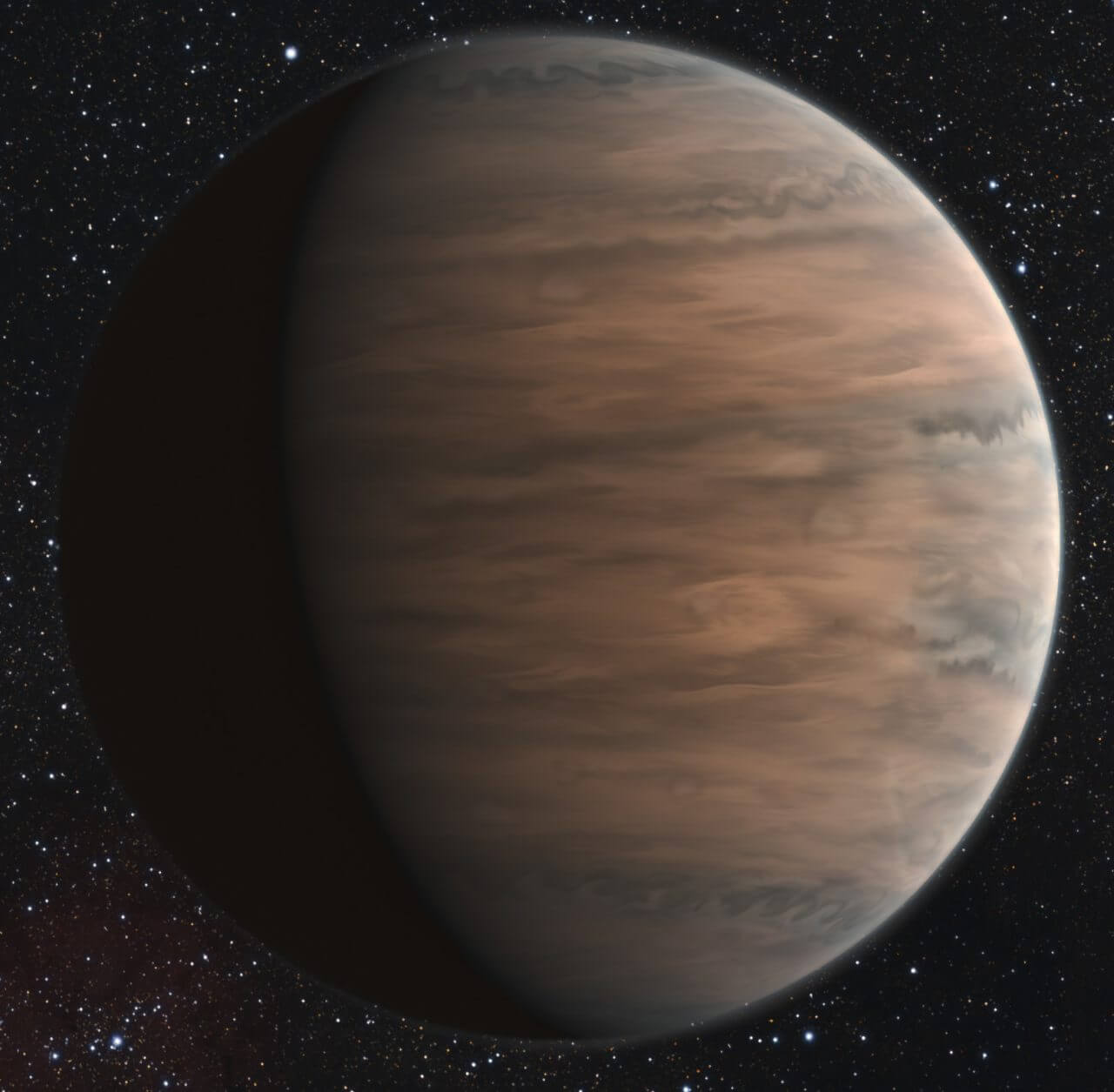「Extrasolar planetWhat kind of molecules are in the atmosphere of “” is essential information for studying the formation and evolution of planets. However, previous observations did not detect some molecules that were thought to exist only at a limited temperature.
A research team led by Laura Flagg of Cornell University has discovered exoplanetsWASP-31B“From the atmosphere”Chromium hydride(CrH)” was successfully discovered. That’s itDiscovery of the first metallic hydride in the atmosphere of an exoplanetHe is. Furthermore, since chromium hydride is a molecule that only exists in the temperature range of 900 to 1900 °C, this is an important discovery in exploring the physical properties of WASP-31b based on temperature conditions.
[▲ رسم توضيحي لـ WASP-31b (مصدر الصورة: وكالة الفضاء الأوروبية وهابل وناسا)]
■ Observing atmospheric molecules of distant planets
How did the planets in the universe, including the Earth on which we live, form and evolve? In order to understand planetary formation, it is necessary to observe many planets and know their properties. For this reason, “exoplanets” orbiting celestial bodies other than the Sun are important targets for observation.
Recent technological innovations have made it possible to explore the types of molecules present in exoplanetary atmospheres. When an exoplanet passes in front of a star as seen from Earth, some of the star’s light passes through the planet’s atmosphere before reaching Earth. The molecules that make up the atmosphere have the property of absorbing light at specific wavelengths, this is called the “absorption spectrum”. Since the absorption spectrum is unique for each molecule, the type of molecule can be calculated inversely.
However, the light that passes through the atmosphere of an exoplanet mixes with the light of the star that reaches it directly without passing through, and the amount of light is very small. In addition, the smaller the amount of molecules in the atmosphere, the weaker the absorption spectrum, and the absorption spectra of different molecules may have very similar values, so overlapping absorption spectra can reveal the type of molecule. You may be wrong. Therefore, studying the components of exoplanetary atmospheres requires very precise spectroscopic observations, which is an extremely difficult task. It is not uncommon for molecules claimed to have been found in earlier observations to either not be found in later observations or to be found to have been misidentified.
■The first discovery of metal hydride in the planet’s atmosphere
As part of the survey project “ExoGemS (Exoplanets with Gemini Spectroscopy),” Flagg and his team observed the exoplanet “WASP-31b” located about 1,300 light-years from Earth on March 12, 2022. ExoGemS is a project to obtain high-spectral observational data Resolution using the GRACES spectroscopic observation instrument mounted on the Gemini North Telescope (Maunakea, Hawaii).
As a result of the analysis, we were able to detect “chromium hydride” in the atmosphere of the planet WASP-31b. This is very accurate compared to previous observational results, and Flagg shows in his paper that it meets the level (5σ or higher) required to claim discovery. Chromium hydride was a brown dwarf in the past. (※) Although it is found in the atmosphereThis is the first time it has been found in the atmosphere of an exoplanet.He is. Not only this,This is also the first time that metal hydrides have been found in the atmosphere of an exoplanet.this means.
*…A celestial body whose characteristics are intermediate between a star like the sun and a giant gas planet like Jupiter.
Since chromium as an element is very rare, the amount of chromium hydride present is also very small, resulting in a very weak absorption spectrum. Another difficulty is that the absorption spectrum of chromium hydride is very close to the absorption spectrum of potassium, which is more abundant. However, high-resolution spectroscopic monitoring data obtained by ExoGemS revealed the presence of chromium hydride by discriminating between wavelengths of only 2 nm.
In addition, this research also collected and analyzed data from WASP-31b, which was observed twice around the spring of 2017 using the UVES spectroscopic observing instrument installed at the Very Large Telescope (VLT) (Atacama Desert, Chile). Finished. The UVES data had a different observation wavelength than ExoGemS, and were not originally data for detecting metal hydrides, so only a small amount of absorption spectrum indicating the presence of chromium hydride could be observed, which will be described later. Data.
■ Chromium hydride is a “thermometer molecule”
This discovery is considered important given the properties of chromium hydride. Chromium hydride can only exist within a narrower temperature range of 900-1900°C compared to other molecules. For this reason, chromium hydride measures the temperature of the atmosphere.thermometer molecule“It became an important exploratory target for investigating not only the temperature of the planet’s atmosphere, but also the properties of the atmosphere and its circulation. In fact, the estimated temperature of WASP-31b’s atmosphere was measured at 1,100 degrees Celsius, which is within the temperature range where it could Chromium hydride is present.
Although this is the first detection of chromium hydride in a planet’s atmosphere, Flagg believes that temperature-sensitive metal hydrides exist in the atmosphere of other planets as well. If we can detect such molecules, it is believed that our understanding of the atmospheres of exoplanetary planets will deepen further.
source
- Laura Flagg, et al. “ExoGemS discovery of a metal hydride in the atmosphere of an exoplanet with high spectral resolution.” (The Astrophysical Journal Letters)
- Kate Blackwood. “Thermometer molecule confirmed on exoplanet WASP-31b”. (Cornell University)
Written by Riri Aya

“Travel maven. Beer expert. Subtly charming alcohol fan. Internet junkie. Avid bacon scholar.”







More Stories
The Alexa-equipped smart display “Echo Show 5” is compact but has many functions | Gizmodo Japan
OPPO smartphone with Android 14 operating system. “Functional differences” occur in some models – OPPO Lab
The brightest gamma-ray burst in history turned out to be an ordinary supernova